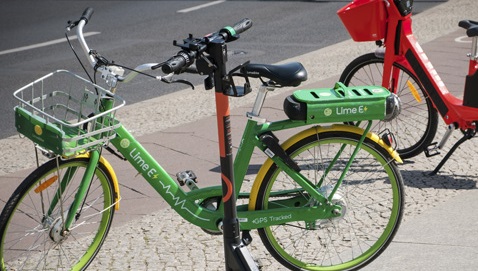What makes us decide to use electric micromobility?
Researchers from the Department of Geography and ICTA-UAB have identified the main psychosociological factors (functionals and non-functionals) influencing individuals in their decision to use scooters and electric bicycles to move around the city. Their conclusions help to better understand the complexity of this decision and to improve strategies and policies that promote micromobility.

Users seem to value the low cost-high convenience combination that most of these modes have to offer.
Electric micromobility modes of transport are increasing their market share in cities around the world. The rise in the number of electric scooters and bicycles in cities has been fuelled by the promise of solving some of the current urban problems such as congestion, air quality, and energy consumption. Cities are promoting these new modes because they offer positive outcomes for the environment and society. However, the exact nature of these benefits is still unclear, especially regarding their actual impact on social equity and justice.
There exist studies devoted to the social dimension of these new modes of transport, mainly focusing on the factors behind their adoption. Nonetheless, a research gap exists on what specifically relates to the sociopsychological determinants of this adoption, when we know that these factors can influence people’s behaviour when taking decisions. Thus, with this study we aimed at providing some clarity, by reviewing the existing literature on the matter.
In this study, we classified sociopsychological factors into functional and non-functional. Functional values are related to the traditional needs perceived by consumers when deciding which transport mode to use, which in this case will mainly be price, operation cost, performance, driving range, comfortability, convenience and charging time. On the other hand, non-functional values will be related to associations that individuals build regarding these modes and those values associated with certain social, emotional, and epistemic needs such as environmental attitude, innovative personality, and social beliefs.
Our results show that regarding the functional factors, users seem to value the low cost-high convenience combination that most of these modes have to offer, and they are generally perceived as practical, easy to use, accessible, and flexible. In contrast, two functional factors that were constantly mentioned as negatively affecting their usage were safety and lack of reliability, mainly based on early reports that find a clear relationship between some of these new modes (e-scooters in particular) and a higher rate of reported accidents and injuries. Also, noteworthy is how the COVID-19 pandemic has altered this negative view in terms of safety, as some users now may perceive these options as safer than others such as public transport.
The most influential non-functional factor appears to be the belief that electric micromobility is environmentally friendly. However, their overall environmental sustainability is under debate once the whole lifecycle of the vehicles is examined. The idea that these modes may also be positive in terms of health has also been found to be a catalyst for their use, and individuals state adopting them to enhance or maintain current physical activity levels. Our findings also suggest that adoption is driven by the symbolism users projected towards innovation, as well as individual interests in gadgets and cutting-edge technology. On the other side, some studies have found social stigma as discouraging their adoption, especially when some populations felt electric bikes constituted a form of cheating when compared with traditional bikes.
In all, the present study demonstrates the complex mix of functional and non-functional factors behind the adoption and usage of electric micromobility. Moreover, there would be other factors, such as cultural differences and levels of support depending on the geographical location, that could be playing a role in their adoption, and that should also be considered.
Alexandra Bretones, Oriol Marquet. Sociopsychological factors associated with the adoption and usage of electric micromobility. A literature review. Transport Policy. Vol. 127, 2022, Pages 230-249. https://doi.org/10.1016/j.tranpol.2022.09.008